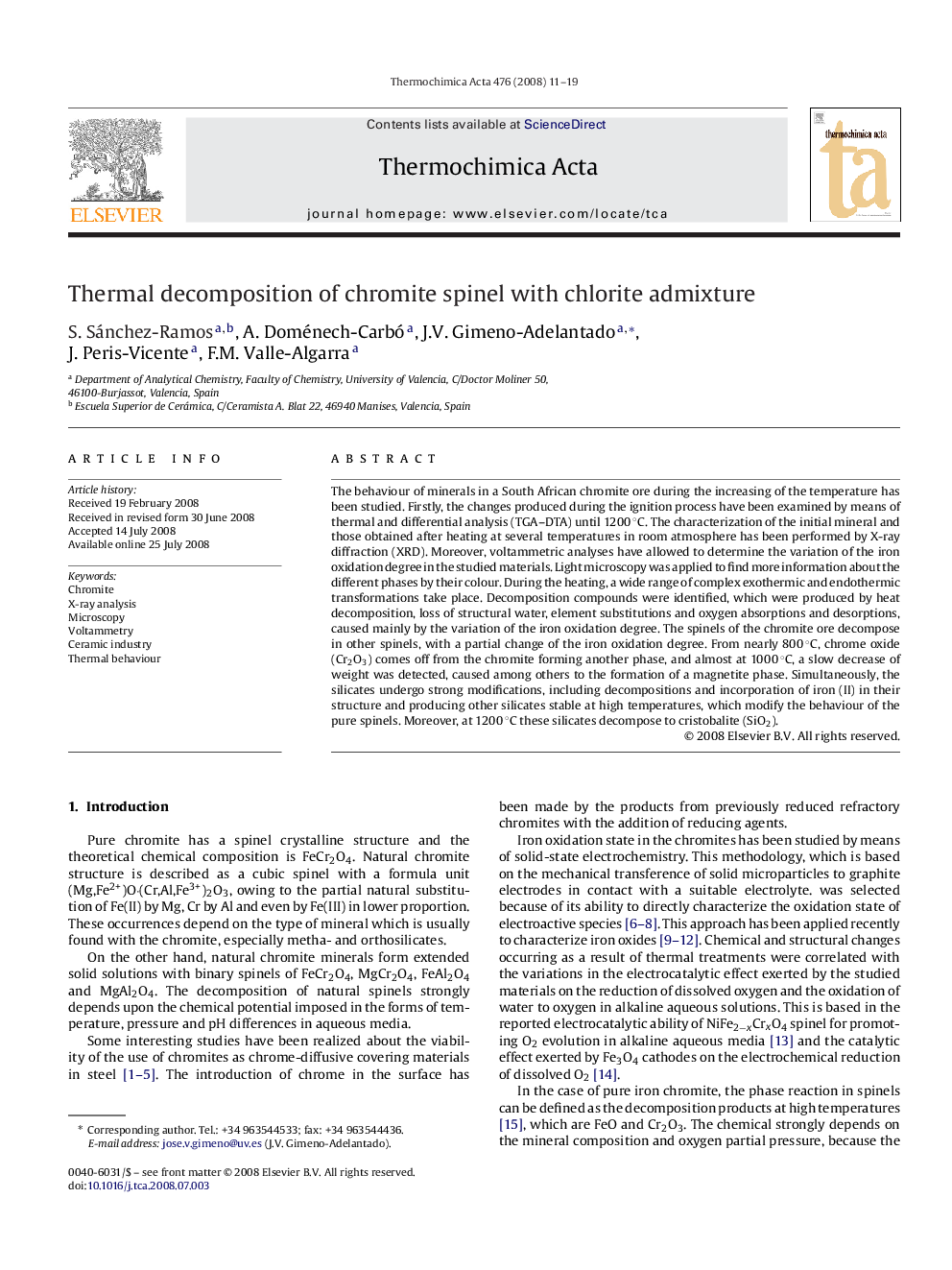| Article ID | Journal | Published Year | Pages | File Type |
|---|---|---|---|---|
| 675373 | Thermochimica Acta | 2008 | 9 Pages |
The behaviour of minerals in a South African chromite ore during the increasing of the temperature has been studied. Firstly, the changes produced during the ignition process have been examined by means of thermal and differential analysis (TGA–DTA) until 1200 °C. The characterization of the initial mineral and those obtained after heating at several temperatures in room atmosphere has been performed by X-ray diffraction (XRD). Moreover, voltammetric analyses have allowed to determine the variation of the iron oxidation degree in the studied materials. Light microscopy was applied to find more information about the different phases by their colour. During the heating, a wide range of complex exothermic and endothermic transformations take place. Decomposition compounds were identified, which were produced by heat decomposition, loss of structural water, element substitutions and oxygen absorptions and desorptions, caused mainly by the variation of the iron oxidation degree. The spinels of the chromite ore decompose in other spinels, with a partial change of the iron oxidation degree. From nearly 800 °C, chrome oxide (Cr2O3) comes off from the chromite forming another phase, and almost at 1000 °C, a slow decrease of weight was detected, caused among others to the formation of a magnetite phase. Simultaneously, the silicates undergo strong modifications, including decompositions and incorporation of iron (II) in their structure and producing other silicates stable at high temperatures, which modify the behaviour of the pure spinels. Moreover, at 1200 °C these silicates decompose to cristobalite (SiO2).
